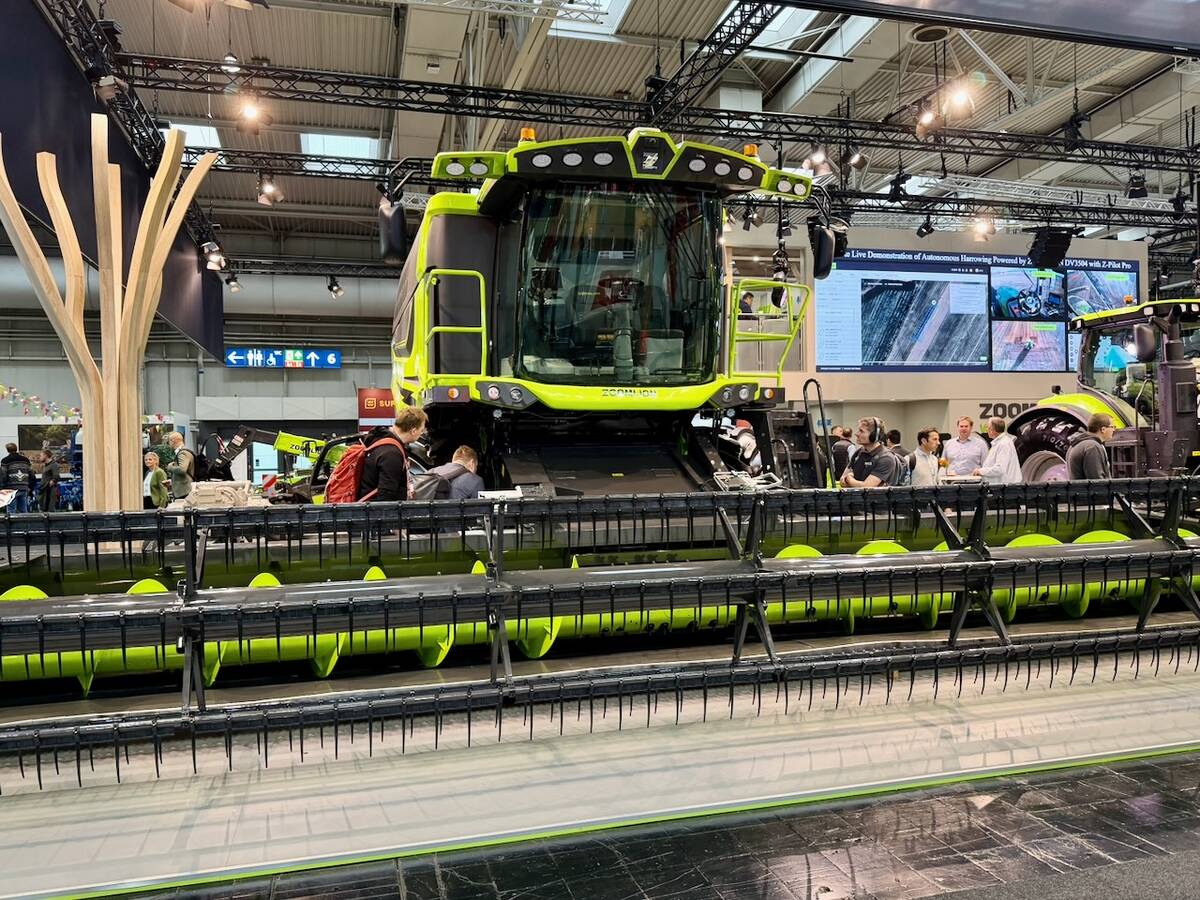Growing grain has changed a great deal over the past few years and the way it is stored has also changed. As well, seasonal demand for grain bins has shifted dramatically this year.
Normally dealers receive the bulk of their orders in June and July for harvest delivery. The 1997 season began much earlier.
“We noticed a lot of orders coming in during the winter and early spring this year. July, usually our busiest month, was much quieter than normal,” said Phil Flaman, of Flaman Sales in Southey, Sask.
Read Also

Agritechnica Day 3: Hybrid drive for a combine, data standards keep up to tech change and tractors of the year
Agritechnica 2025 Day 3: Hybrid drive for a combine, data standards keep up to tech change and tractors of the year.
Southern Alberta dealers suggest sales similar to last year, but delayed orders are causing a backlog for welded hopper bin manufacturers as producers are waiting to place orders until they start harvest.
“Some producers are waiting to see what they have to put in the bins prior to ordering,” said Menno Kornelsen, president of Wheatland Bins, in Lethbridge, Alta. “For those of us who build welded bins, that means a challenge for both production and trucking. Right now we have a four to six week backlog.”
In the Peace River area of Alberta, sales are less brisk.
“It is much slower this year,” said Roger Klassen, of De-In Industries, in Debolt, Alta.
“Crops aren’t doing so well. Seeding was late and a lot of people didn’t get their crops in last fall. Payments from the Crow Benefit aren’t there either so money is tighter in general and it is cutting into sales. Last year we just about sold out.”
Henry Rosler has been building and selling grain bins for more than 30 years in Saskatchewan and says he has seen years like 1997 before.
“Sales are triple last year, and last year was pretty good, but it is nothing new. As farmers have money they buy bins. Program payouts and the equity payments from (Saskatchewan Wheat Pool) made a difference,” he said.
“This year, by March 1 we beat last year, but as the year wore on we got a lot of cancellations due to heat and drought crop stress. But now the farmers are getting out in the field for harvest. They’re finding out it isn’t as bad as they expected and orders have picked up again.”
Replace damaged bins
Manitoba dealers are reporting strong sales similar to last year, largely the result of bins being damaged in last spring’s flood.
Dealers say a shortage of bin cranes and crews are delaying delivery of many bins and farmers looking to rent cranes often must go further afield.
Making matters worse, a shift to larger granaries has resulted in the need for larger, heavier cranes and jacks and the need for specialized crews to erect bins that farmers at one time could have erected themselves.
“There is a major trend to larger bins and hopper bottoms. Ten years ago a 5,000-bushel bin was considered a big bin. Now 10,000 bushel bins are common,” said Flaman.
“Hopper bottoms were once considered a luxury item on the farm,” said Bill Kemp, of Westeel, a bin manufacturer based in Saskatoon. “Now, as the farm population ages and time to spend handling grain is reduced, the hopper bottom is becoming the smaller bin of choice.”
Pete Reimer, of NRW Manufacturing, in Riverton, Man., said his company is being kept busy with hopper bottom conversions.
“Along with another record year for bin sales, we have been right at capacity both last year and this.”
The Manitoba builder said new hog barns, low interest rates but “definitely not grain prices” are driving demand in Manitoba.














